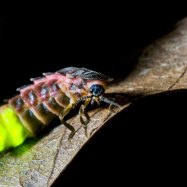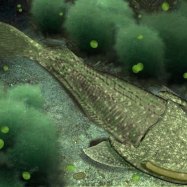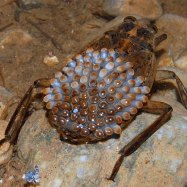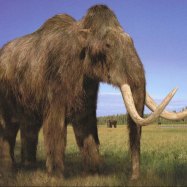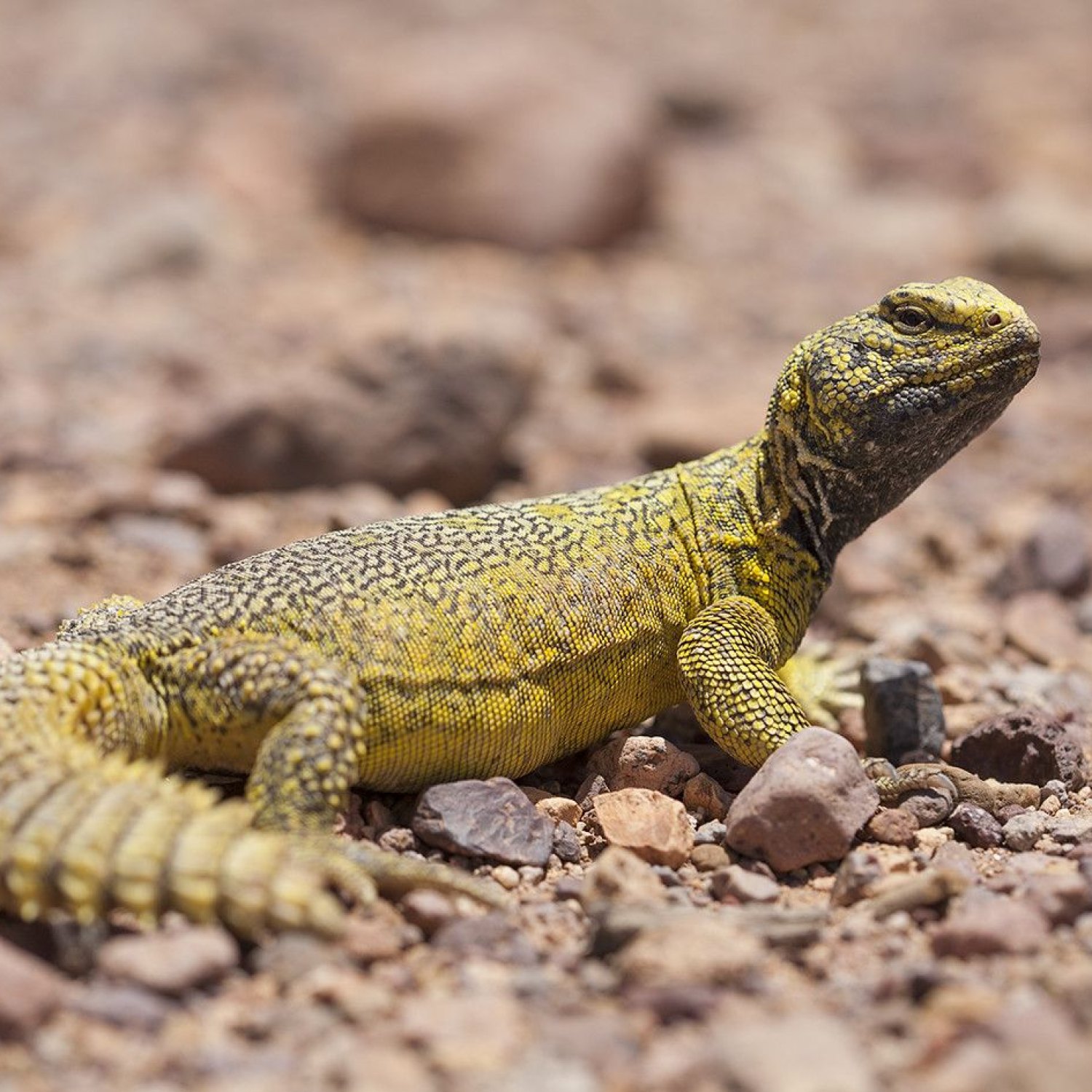
Uromastyx
Varies depending on the species, ranging from 10 to 30 inches
Discover the fascinating world of Uromastyx, a type of lizard found in deserts and semi-deserts. With a stocky and robust body, these animals come in various sizes, ranging from 10 to 30 inches. Learn more about these members of the Agamidae family and their unique features, habitats, and behaviors. #Uromastyx #Lizards #Agamidae #DesertAnimals
Animal Details Summary:
Common Name: Uromastyx
Kingdom: Animalia
Habitat: Desert and rocky areas
Uromastyx: The Vibrant Desert Reptile
The deserts and rocky areas of Northern Africa, the Middle East, and South Asia are home to one of the most unique and colorful reptiles - the Uromastyx. Belonging to the genus Uromastyx, these charismatic creatures are popularly known as spiny-tailed lizards or dabb lizards.Tucked away in their burrows, camouflaged among the rocks, these reptiles may seem elusive, but their bright and captivating colors make them hard to miss. Their vibrant colors and striking personalities make them a popular choice among reptile enthusiasts, and their gentle temperament allows for easy domestication Uromastyx.
But what makes these reptiles so fascinating? Let's dive into the unique characteristics of this desert dwellers and uncover the hidden secrets of Uromastyx.
Classification and Habitat
Uromastyx belongs to the kingdom Animalia, phylum Chordata, and class Reptilia. They are a part of the order Squamata, which also includes snakes, lizards, and amphisbaenians. These reptiles belong to the family Agamidae, which includes over 350 species of lizards found in diverse habitats.Being desert dwellers, Uromastyx prefer a hot and dry climate, making the deserts and semi-deserts of North Africa, the Middle East, and Asia their preferred habitats. These areas provide them with rocky outcrops and sandy terrain, which they use for camouflage and shelter.
Feeding Habits
Unlike many other reptiles, Uromastyx have a strict herbivorous diet. They feed primarily on a variety of plants, fruits, and vegetables, including cacti, leaves, seeds, and flowers. Their digestive system has evolved to efficiently break down fibrous plant material, making them excellent grazers Unau.Due to their specific dietary requirements, Uromastyx need a carefully curated diet, consisting mostly of dark leafy greens, such as kale and collard greens. Fruits, vegetables, and flowers can be offered as occasional treats, but too much fruit can cause digestive problems for these reptiles.
Appearance and Physical Features
One of the most striking features of Uromastyx is their vibrant and diverse coloration. Their bodies can range from bright yellow, golden orange to deep red, often with dark brown to black patterns adorning their backs. These colors not only make them visually stunning but also serve as protective coloration in their natural habitats.Their body shape is stocky and robust, with a large head, short snout, and thick limbs. Most Uromastyx species have short spikes or bumps on their tails, which they use for defense against predators. These spikes also help them climb rocks and move through sand with ease.
Uromastyx species vary in size, with the smallest species, U. alfredschmitti, measuring around 10 inches in length, and the largest species, U. ocellata, growing up to 30 inches long. They have a lifespan of 15 to 20 years in captivity.
Behavior and Temperament
Uromastyx are diurnal creatures, meaning they are active during the day and spend their nights in the safety of their burrows. They are solitary creatures and only come together during the breeding season.Despite their fierce appearance, Uromastyx have a docile and gentle temperament. They rarely exhibit aggression and can be easily tamed, making them popular pets among reptile enthusiasts. However, like all reptiles, they require proper care and attention, and should only be kept as pets by those who can provide a suitable and natural-like environment for them.
Adaptations for Desert Life
Living in a harsh desert environment means Uromastyx have had to develop various adaptations to survive. The most notable one is their ability to retain water. Uromastyx have specialized kidneys that allow them to excrete highly concentrated urine, conserving water in their bodies.Their internal organs are placed towards the front of their body, allowing them to keep their vital organs cooler while their muscular hind legs help them dig burrows in the hot desert sand. They also have a third eye, called a parietal eye, which helps them regulate their basking and seek out shade when needed.
Conservation Status
Uromastyx populations are still relatively stable in their natural habitats, with no major threats currently impacting their survival. However, due to their popularity as exotic pets, some species are facing risks of overexploitation. Moreover, habitat destruction and illegal capture for the pet trade continue to be potential threats to their existence.To ensure the survival of these vibrant creatures, responsible pet ownership is crucial. It is essential to obtain Uromastyx from legal and ethical sources and provide them with proper enclosures, diet, and care.
In Conclusion
Uromastyx are one of the most unique and fascinating reptiles found in the world. Their vibrant colors, docile temperament, and desert adaptations make them an attractive addition to any reptile collection. While they may not be suitable pets for everyone, the proper care and attention can make them delightful companions for those intrigued by these charming desert dwellers. With responsible pet ownership and conservation efforts, we can ensure the survival of Uromastyx for generations to come.

Uromastyx
Animal Details Uromastyx - Scientific Name: Uromastyx
- Category: Animals U
- Scientific Name: Uromastyx
- Common Name: Uromastyx
- Kingdom: Animalia
- Phylum: Chordata
- Class: Reptilia
- Order: Squamata
- Family: Agamidae
- Habitat: Desert and rocky areas
- Feeding Method: Herbivorous
- Geographical Distribution: Northern Africa, Middle East, and South Asia
- Country of Origin: Various countries in Africa, the Middle East, and Asia
- Location: Deserts and semi-deserts
- Animal Coloration: Vibrant colors including yellow, orange, and red
- Body Shape: Stocky and robust
- Length: Varies depending on the species, ranging from 10 to 30 inches
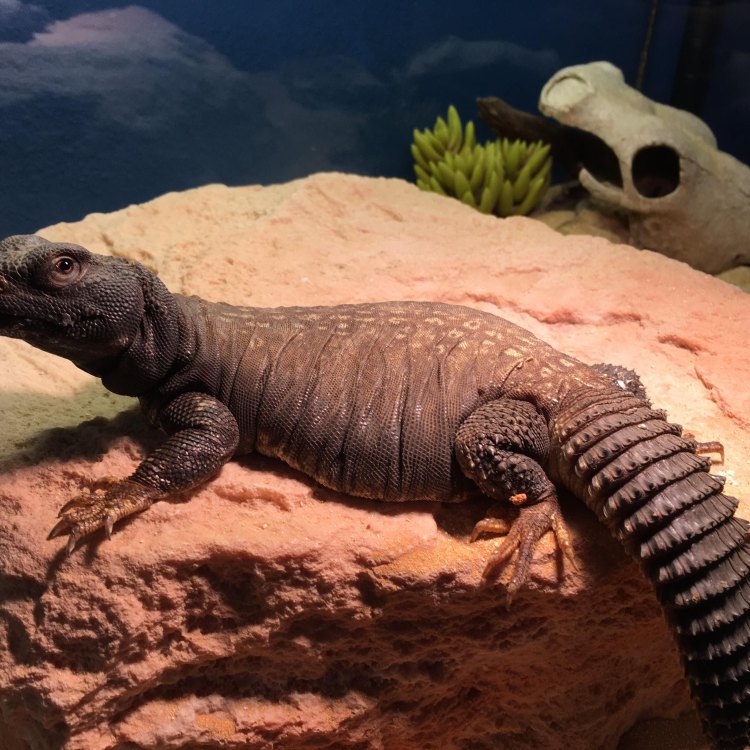
Uromastyx
- Adult Size: Varies depending on the species, ranging from 9 to 36 inches
- Average Lifespan: 15 to 20 years
- Reproduction: Sexual
- Reproductive Behavior: Breeding season varies for different species
- Sound or Call: Most species do not produce vocalizations
- Migration Pattern: Non-migratory
- Social Groups: Solitary
- Behavior: Diurnal, active during the daytime
- Threats: Habitat loss, poaching, and illegal pet trade
- Conservation Status: Varies depending on the species, ranging from Least Concern to Endangered
- Impact on Ecosystem: Important for seed dispersal in their habitat
- Human Use: Kept as pets
- Distinctive Features: Spiny tail and spiky scales on the back
- Interesting Facts: Uromastyx lizards are known as spiny-tailed agamas due to their large, muscular tails with spiny scales.
- Predator: Predators include birds of prey, snakes, and mammals

Uromastyx
The Fascinating World of Uromastyx Lizards: A Unique Species in Danger
As humans, we often strive to understand and categorize the world around us. One way we do this is by classifying different species of animals, giving them scientific names and placing them within specific groups. But every so often, we come across a creature that defies these conventional classifications and stands out as truly one-of-a-kind. The Uromastyx lizard is one such creature, with a range of unique features and behaviors that make it truly fascinating PeaceOfAnimals.Com.Uromastyx, also known as the spiny-tailed agama, is a genus of lizard that belongs to the family Agamidae. There are 18 recognized species within the genus, all of which are native to Africa, the Middle East, and parts of Asia. Each species varies in size, with adults ranging from 9 to 36 inches. They have an average lifespan of 15 to 20 years, and their reproduction is sexual, with males and females engaging in courtship behaviors during the breeding season.
One of the most striking features of the Uromastyx lizard is its spiny tail and spiky scales on its back. This gives them a unique appearance and also serves as a defense mechanism against predators. When threatened, these lizards can inflate their bodies, making it difficult for predators to swallow them. In addition, they can also use their tails as a weapon, whipping predators with their spiny scales.
But these unique features are not just for show, they also play an essential role in Uromastyx lizards' ecosystem Urial. As diurnal creatures, active during the daytime, they are responsible for seed dispersal in their habitat. By feeding on a variety of plants, they help to spread seeds, ensuring the growth and survival of different plant species. This makes them an important contributor to the ecosystem and highlights the crucial role that every species plays in maintaining balance in nature.
While Uromastyx lizards may seem solitary, they do engage in social behavior during the breeding season. However, the exact timing of this season varies among different species. In some cases, it can occur in the spring, while in others, it may take place in the summer. This variability is yet another unique aspect of these fascinating creatures.
Their Natural Habitat and Threats to Their Survival
Uromastyx lizards primarily inhabit rocky and sandy deserts, where they can burrow and avoid extreme temperatures. These areas are also home to a variety of plants, which serve as their main food source. However, in recent years, their natural habitat has been increasingly threatened by human activities.Habitat loss, due to urbanization and agricultural expansion, is a significant threat to Uromastyx lizard populations. As their natural homes are destroyed, they are forced to move to new areas, which may be less suitable for their survival. This disruption of their natural habitat can lead to a decline in their population and, in some cases, endangerment.
In addition to habitat loss, Uromastyx lizards are also targeted by poachers and the illegal pet trade. Due to their unique appearance and ease of care, they are a popular choice for reptile enthusiasts. However, this demand has led to a rise in illegal collecting and trafficking of these creatures, further endangering their already vulnerable populations.
The Importance of Conservation:
As with any threatened species, conservation efforts are crucial for the survival of Uromastyx lizards. However, the conservation status of these lizards varies depending on the species. While some are listed as Least Concern on the IUCN Red List, others are classified as Endangered. This highlights the need for tailored conservation strategies for each species to protect them from further decline.One significant step in this direction is creating awareness about the value of these unique creatures and the threats to their survival. By educating the public about Uromastyx lizards, we can create a sense of empathy and responsibility towards their preservation. In addition, implementing laws and regulations to prevent the illegal pet trade and protect their natural habitat is essential.
Uromastyx as Pets:
Another way to appreciate these fascinating creatures is by keeping them as pets. However, before considering a Uromastyx lizard as a pet, it is crucial to do thorough research and understand their care needs. Many factors must be taken into account, such as housing, diet, and potential medical issues, to ensure the well-being of these lizards. Due to their long lifespan, they are a long-term commitment, and proper care should be taken before making the decision to bring one into your home.The Threat of Artificial Intelligence on Uromastyx Lizards:
Apart from the more traditional threats to their existence, Uromastyx lizards are now facing a new danger, the rise of artificial intelligence (AI). With advancements in technology, there has been an increasing use of AI in the field of biology and conservation. While this can have several benefits, there is also a risk of AI-generated content making it difficult to distinguish between real and fake data.This poses a significant threat to the survival of species like Uromastyx lizards, as AI-generated content can easily mask actual data, leading to incorrect conservation strategies. Therefore, it is essential to continue using traditional methods of data collection, such as field studies and observations, to ensure the accuracy of information and avoid any harm to these already vulnerable creatures.
The Need for a Collaborative Effort:
Ultimately, the survival of Uromastyx lizards and many other threatened species rests in the hands of humans. It is vital for us to collectively work towards creating a sustainable environment for these unique creatures to thrive. This can be achieved through a combination of efforts, including conservation efforts, education, and responsible pet ownership. By coming together and taking action, we can ensure that these creatures do not become just a distant memory, but continue to flourish in their natural habitats for future generations to appreciate and admire.
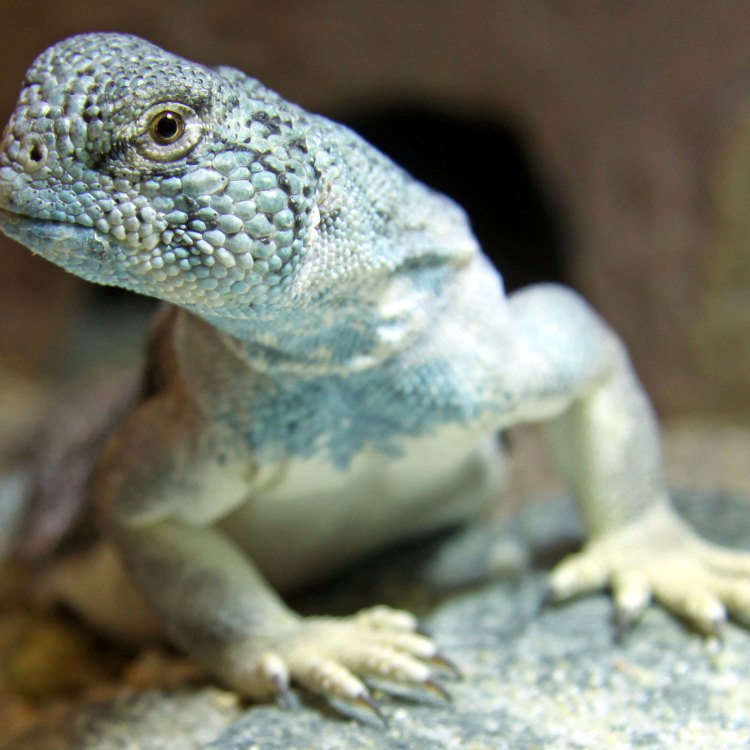
Uromastyx: The Vibrant Desert Reptile
Disclaimer: The content provided is for informational purposes only. We cannot guarantee the accuracy of the information on this page 100%. All information provided here may change without prior notice.

